(Disclaimer: This page contains affiliate links. If you make a purchase from one of these links, Habitot will earn a small commission at no extra cost to you.)
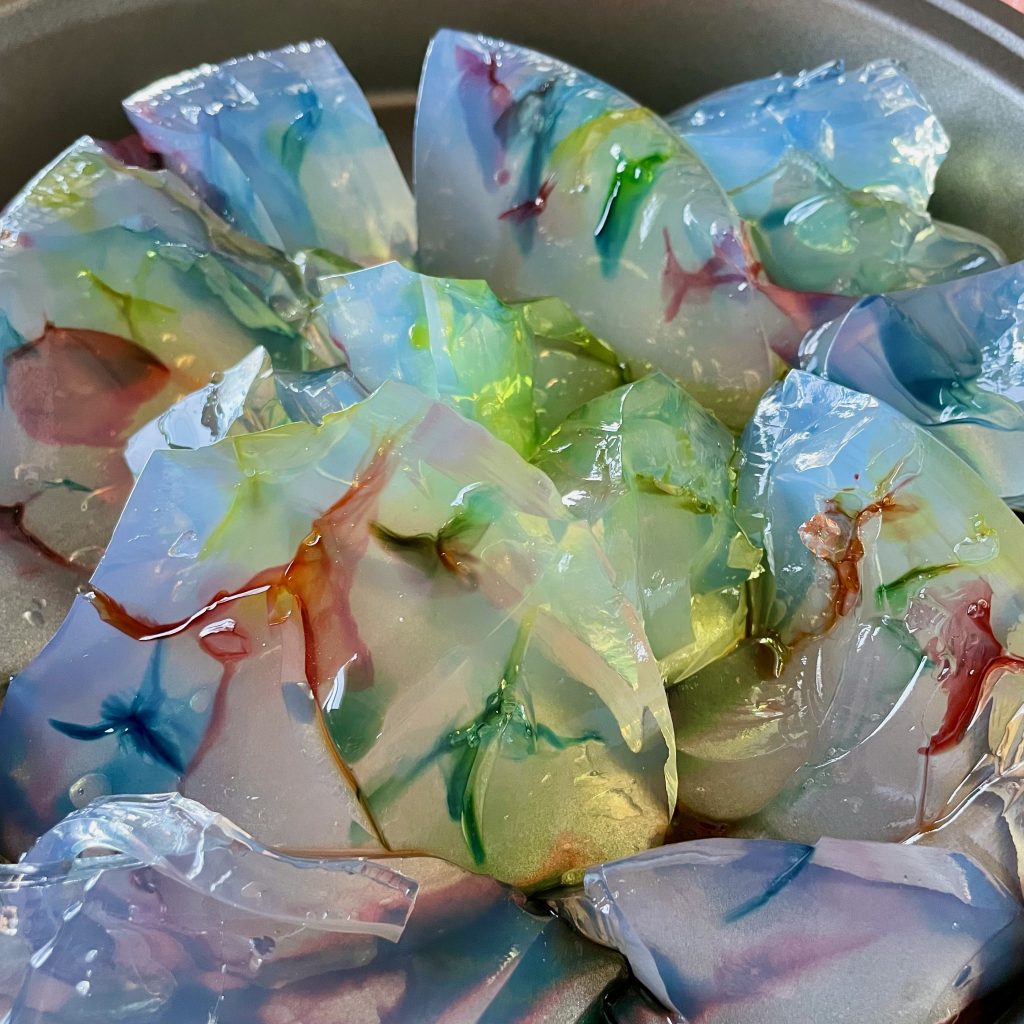
Inspired by a classic Bev Bos activity, this colorful gelatin experiment makes for hours of creative, messy fun! The result is mesmerizing and the process supports the development of children’s motor skills.
What We’re Learning & Skills We’re Building
- Early science – gelatin powder dissolves when mixed into water, firms in cold temperatures, and melts in hot temperatures
- Language acquisition – learning terms such as “dissolve” and using words to describe how the gelatin looks and feels
- Comparison – observing how the gelatin/water mixture looks when it’s warm/hot vs. how it looks once it’s cooled
- Sensory exploration – using the senses of sight and touch to learn about gelatin
- Fine motor skills – using the small muscles in the hands to squeeze pipettes/medicine droppers
(SAFETY: Steps 1-3 below involve boiling water and should be done by an adult. Also, please do not consume the gelatin.)
Materials
(Note: In case you have less than 4 packets of gelatin powder, the ratio of gelatin powder to water is 1 packet (0.25 oz) gelatin powder to ¼ cup cool water + ¾ cup boiling water.)
- 1 cup cool water
- Large mixing bowl
- 4 packets plain, clear Knox gelatin powder (1 oz total)
- 3 cups boiling water
- Mixing spoon
- (Optional) Large silicone mold or bundt cake pan
- Large tray, baking sheet, or plate
- Food coloring or liquid watercolor paints
- Small bowls/cups for colors
- Pipettes or medicine droppers
- (Optional) Child-safe forks and spoons
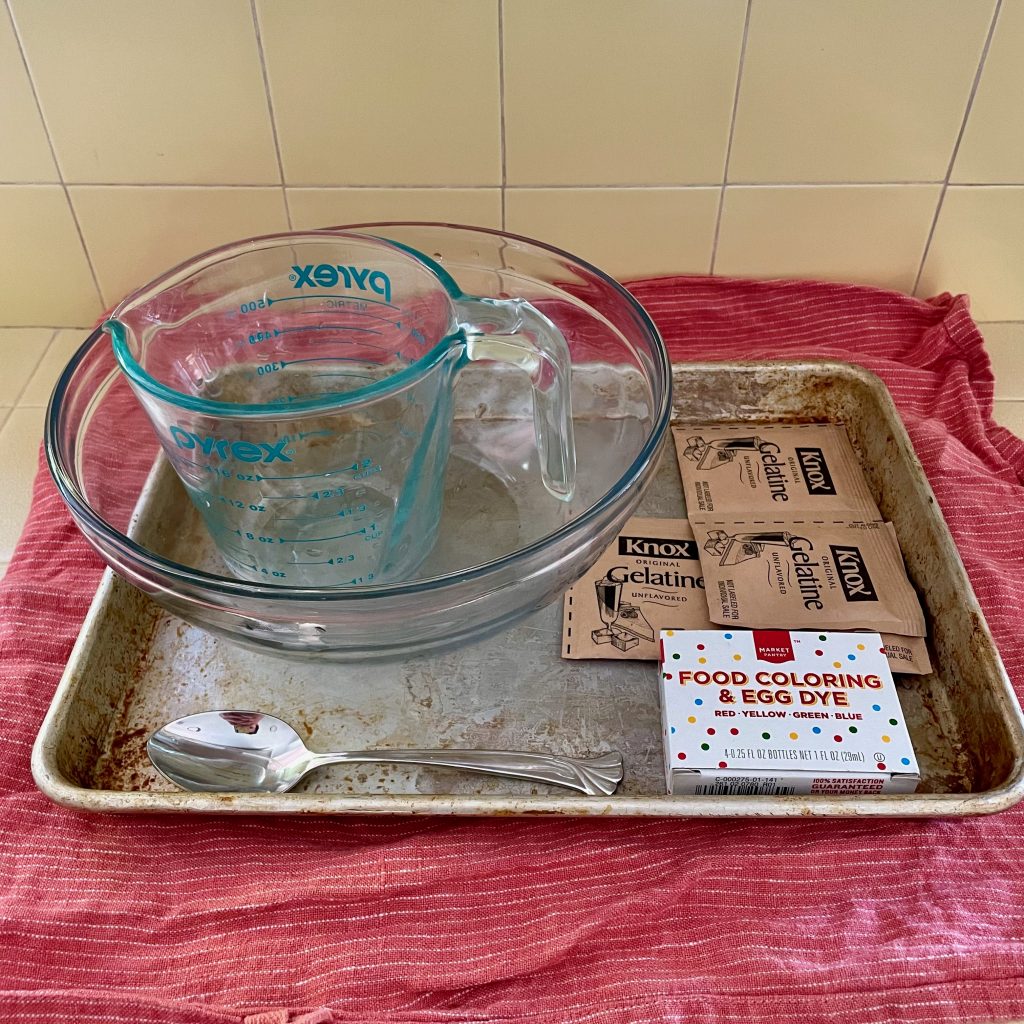
Creating the Gelatin (Adults Only Steps 1-3)
- Measure and boil 3 cups of water.
- While the water is boiling, measure and pour 1 cup of cool water into a large bowl, then sprinkle 4 packets of gelatin powder over top. Don’t mix – let it sit for 1 minute.
- Pour the boiling water into the bowl and stir until the gelatin powder is completely dissolved.
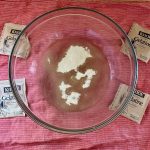
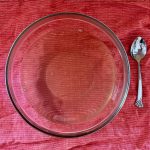
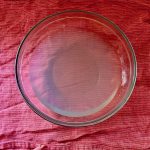
- Observe: Have your child look at the liquid mixture before it goes into the refrigerator. Ask, “What happened to the dry gelatin powder when we poured in the hot water?” (It dissolved into the water.) “What does the gelatin/water mixture look like? Does it have a color?”
- (Optional) Transfer the liquid into a silicone mold or bundt cake pan.
- Place the (uncovered) bowl, mold, or pan in the refrigerator to chill for about 3-4 hours or until the gelatin is firm to the touch.
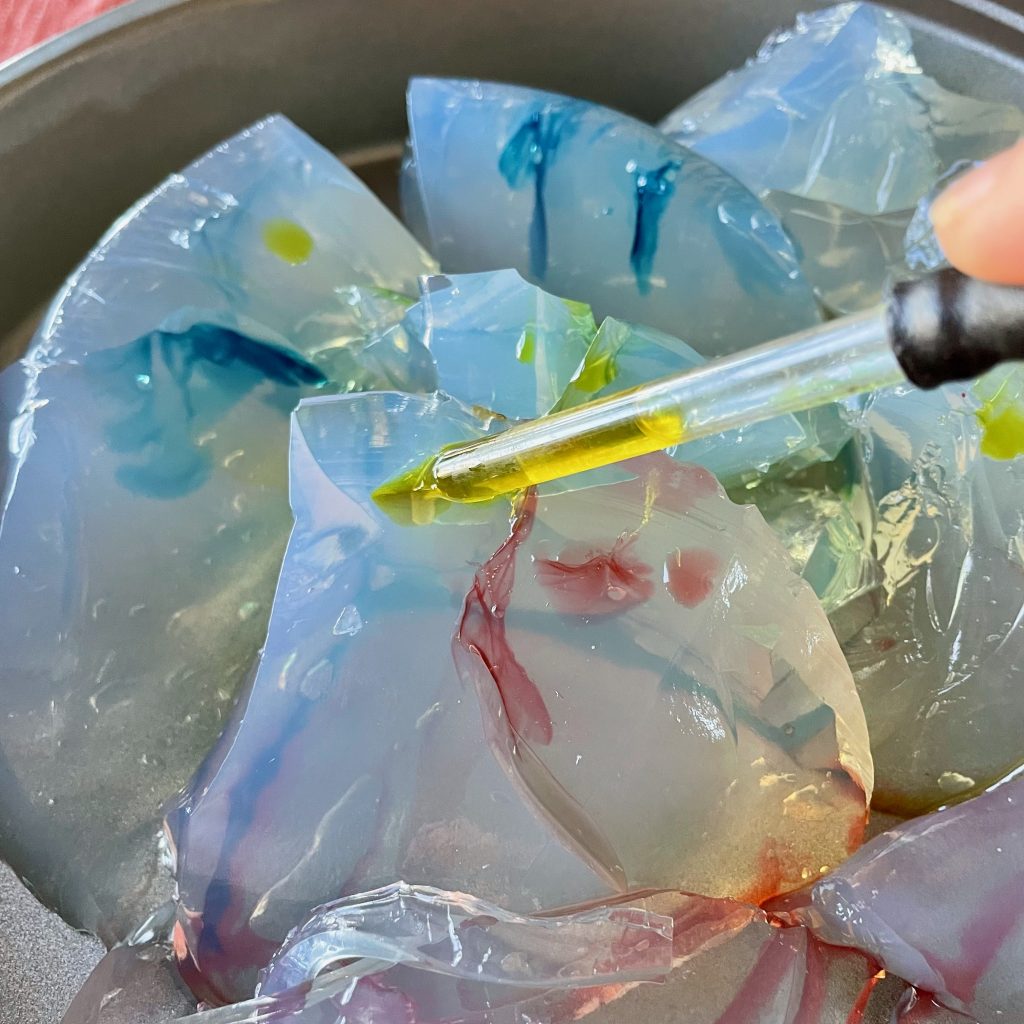
Experimenting With the Gelatin
1. When the gelatin is firm, remove it from the fridge and carefully transfer it onto a large tray, a baking sheet, or a large plate. (Note: The gelatin might fall apart during the transfer. The activity will still work and be fun regardless!)
2. Observe: Have your child explore the gelatin using the senses of sight and touch. Ask, “What happened to the gelatin/water mixture in the refrigerator? Can you think of any other foods that get firm (solid) once they’re cool?” (Melted butter and frozen water.) “What does the gelatin feel like now? Smooth, bouncy, firm?”
3. Add food coloring or liquid watercolor paints to small bowls/cups. For vivid colors, add 15-20 drops of either to a half-cup of water.
4. Have your child use pipettes or medicine droppers to suck up the colors. (Demonstrate how to use droppers if necessary.) Insert droppers into the gelatin, squeeze, and watch as the colors spread out!
5. Once your child is done adding colors, they can explore the colorful gelatin with their hands or break it up using child-safe forks and spoons.
6. Observe: Ask, “What does the broken-up gelatin feel like? Squishy? Watery?”
7. (Optional) If it’s a warm, sunny day, place the tray of gelatin outside in the sun for about an hour. Your child can observe what happens when the gelatin is exposed to heat. (It melts!)
Clean-up
Dispose of the gelatin in the trash (if only food coloring was used, but not liquid watercolor paints, it can be composted). Do not put it down the sink as it can clog the drain. Soak the mixing bowl and tray in warm, soapy water to dissolve stuck-on gelatin.
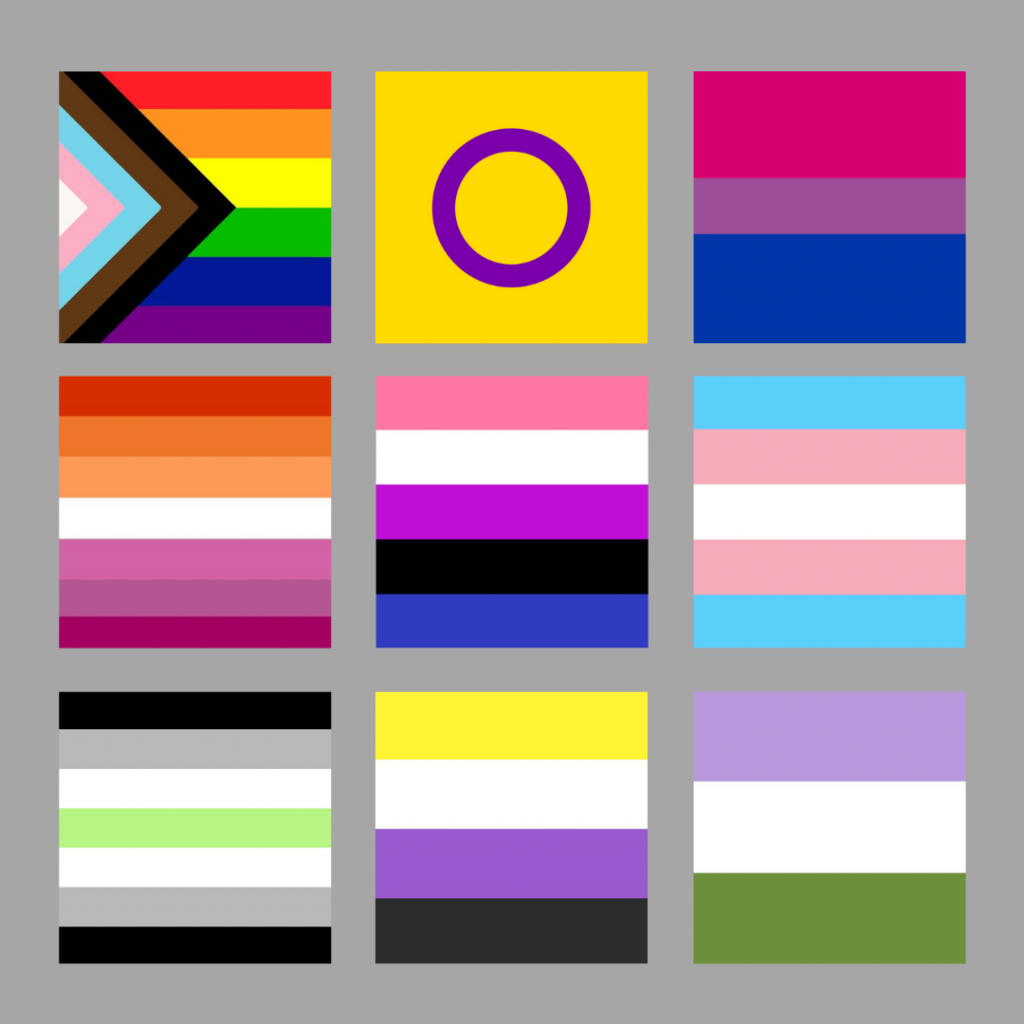
A Note About “Rainbow” Art Activities
Every June in Habitot’s Art Studio, we created rainbow-themed art as part of our week-long “Rainbow Arts” Pride celebration. This year, we want to acknowledge that the traditional rainbow Pride flag, from which we’ve drawn inspiration for our art activities, doesn’t fully reflect the diversity of the LGBTQ+ community. There are many flags used by groups in the LGBTQ+ community that we’d like to highlight and include in our 2022 celebration! Check out this list of Pride flags and what the different flags mean for specific communities. Happy Pride!

